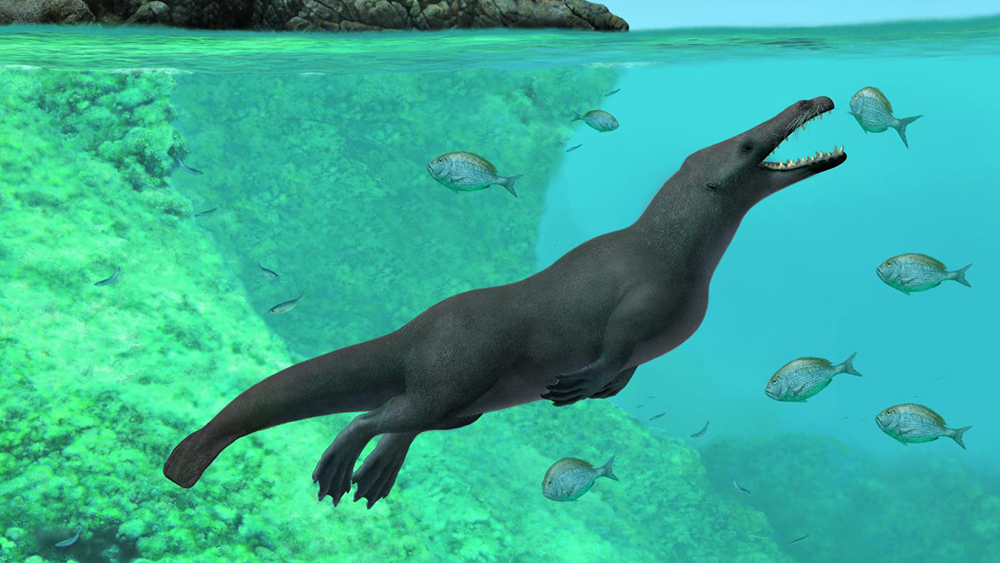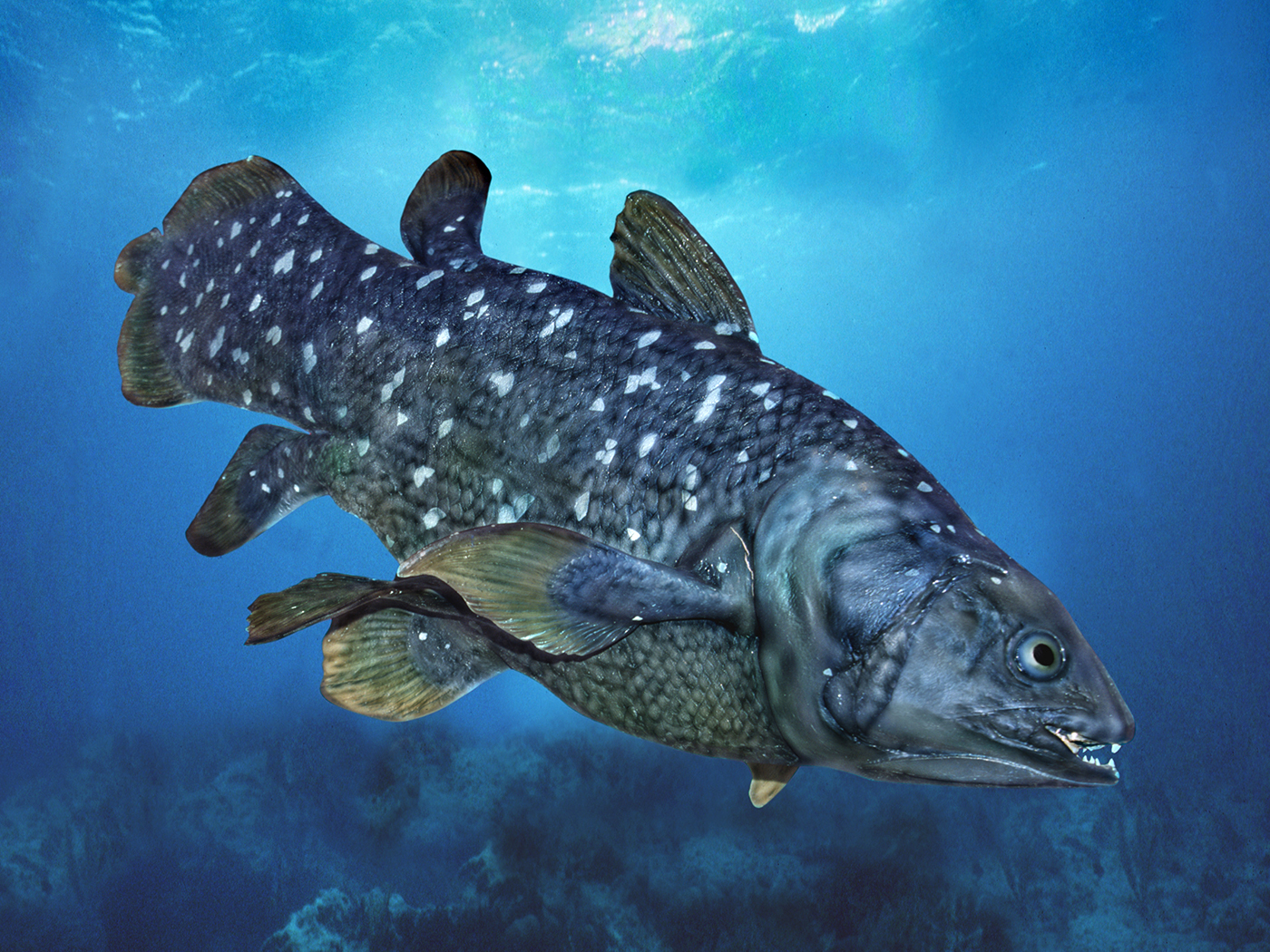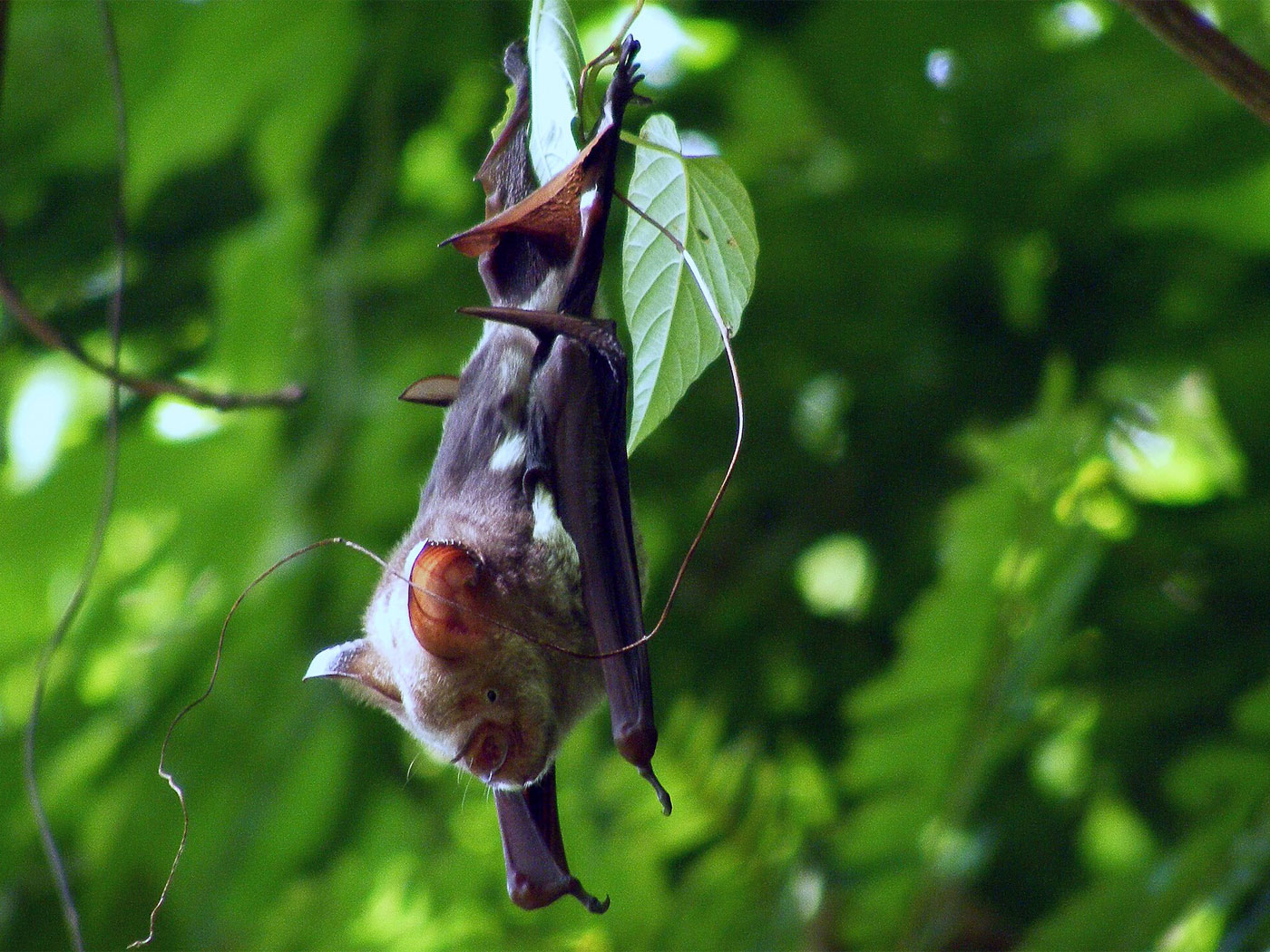By Brian Thomas and Jeffrey Tomkins
The story of whale evolution is one of the most ridiculous fables of scientifically unsupported speculation ever perpetrated on the public. And now, with the recent discovery of a Peruvian fossil of a clearly four-legged land animal named Peregocetus being called “An Amphibious Whale,” the evolutionary myth has just dived to a new low.1
The newly found fossil creature may have been amphibious because it appears to possibly have had webbed feet for swimming. It could definitely walk on land and possibly also swim in water, like beavers and otters. If all it takes is an amphibious capability to earn the name whale, then why not call otters, muskrats, and beavers “whales,” too?
According to the grand evolutionary story, whales evolved from a dog-like land creature. As the whale of a tale goes, over millions of years, the size of these evolving creatures grew enormously and finally resulted in the largest animals ever seen on Earth—the baleen whales that reach 100 feet in length.
Besides the enormous differences in size and specializations—filter feeding versus toothed whales—many designs are only found in whales.2-5 To name a few, whales have specialized bodily features that allow for unique breathing, swimming, deep diving, reproduction, echolocation, communication, specialized feeding, and many other novel traits not found in any other type of sea or land creature.
From a paleontological perspective, whale evolution still lacks its most critical need: evidence. Evolutionary researchers have not yet reached consensus on any fossil or living creature as having intermediate features between a whale and a land creature (including semi-aquatic creatures like otters). The Current Biology report described anatomical features used to bin Peregocetus into a man-made category of pre-whales. This process of inventing evolutionary categories helps make the wacky concept of legged whales easier to swallow.
In this new research, the authors fully acknowledge that the creature walked on land and even had small hooves. They said, “the retention of small hooves with a flat anteroventral tip at fingers and toes indicate that Peregocetus was still capable of standing and even walking on land.”1 Despite the fact that the creature had hooves, the authors speculated that its feet were webbed and it swam like an otter. No soft tissue preservation to indicate webbing was found, but the bone structure of the feet could have allowed for it.
Much of the skeleton was missing, including the entire skull above the lower jaw. Even the latter section of the creature’s tail was completely absent, yet this didn’t prevent evolutionary artists from adding an imaginary small whale-like fluke in their graphic reconstructions!
The features of the fossil that supposedly indicated a whale ancestry were minor similarities to other so-called “pre-whale” fossils called protocetids. The fossils in this evolutionary category were not pre-whales. Instead, they were even less aquatic and looked canine-like.
This evolutionary story needs what every evolutionary story needs: a missing link, a fossil with features that show transition from wolf to whale. A partial list includes re-plumbing nostrils, crafting fins, arranging new bones and muscles to fit them, designing new teeth, making a whole new reproductive system, and integrating new thermoregulation, eyes, ears, and pressure and temperature sensors.6 Like all other extinct or living amphibious mammals, Peregocetus has none of these required transitional features.
As far as science can tell, whales have always been whales. ![]()
Overall, this new fossil’s news reduces to an evolutionary boondoggle accompanied by startlingly speculative imagination. As far as science can tell, whales have always been whales.
References
1. Lambert, O. et al. 2019. An Amphibious Whale from the Middle Eocene of Peru Reveals Early South Pacific Dispersal of Quadrupedal Cetaceans. Current Biology. 29: 1-8.
2. Wells, J. 2018. From Bears to Whales: A Difficult Transition. Evolution News and Science Today. Posted on evolutionnews.org July 17, 2018, accessed April 15, 2019.
3. Tomkins, J. and F. Sherwin. 2018. New Whale Fossil Harpoons Evolution. Creation Science Update. Posted on ICR.org June 22, 2012, accessed April 15, 2019.
4. Thomas, B. Organ Discovery Shows Why Whales Didn’t Evolve. Creation Science Update. Posted on ICR.org June 22, 2012, accessed May 30, 2018.
5. Guliuzza, R. G. 2016. Major Evolutionary Blunders: Are Whales and Evolution Joined at the Hip? Acts & Facts. 45 (3): 12-14.
6. Living Waters. Illustra Media. Segment shown on Youtube: Whale Evolution vs. Population Genetics. Posted on YouTube August 9, 2016, accessed April 15, 2019.
Stage image: Artistic reconstruction of Peregocetus
Stage image credit: Copyright © 2018. A. Gennari. Used in accordance with federal copyright (fair use doctrine) law. Usage by ICR does not imply endorsement of copyright holders.
Dr. Jeffrey Tomkins is Director of Life Sciences at the Institute for Creation Research and earned his Ph.D. in genetics from Clemson University. Dr. Brian Thomas is a Research Associate at the Institute for Creation Research and earned his Ph.D. in paleobiochemistry from the University of Liverpool.


















